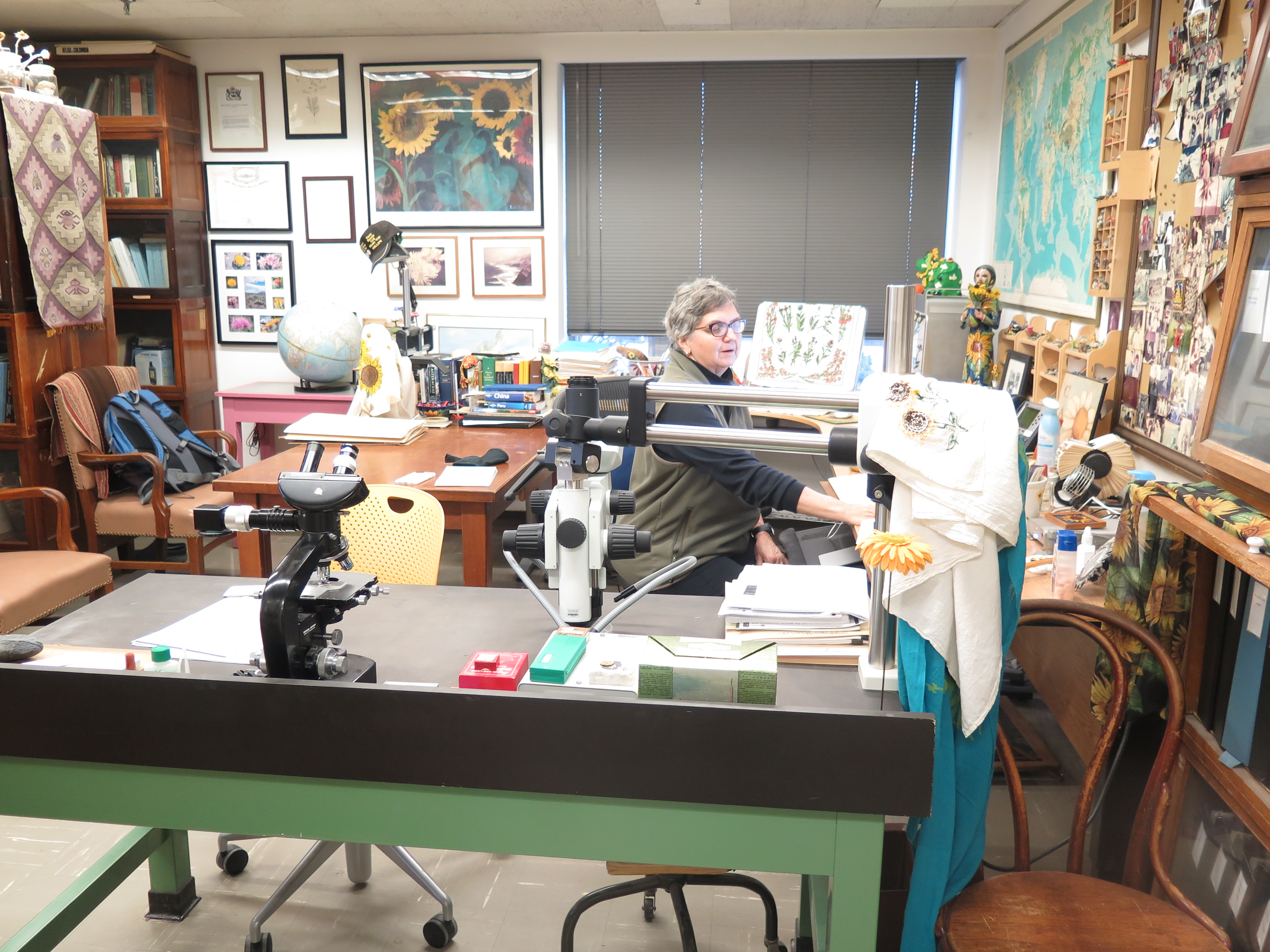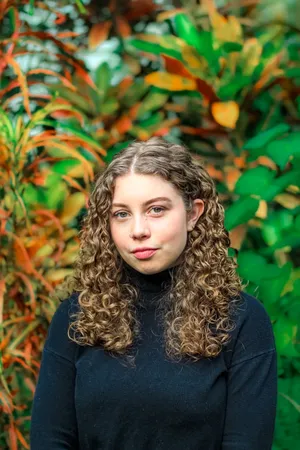NATIONAL MUSEUM OF NATURAL HISTORY
Late Smithsonian Botanist’s Legacy Continues to Blossom
Museum plant specimen belongs to a new genus that honors the pioneering research of longtime curator Vicki Funk
:focal(800x541:801x542)/https://tf-cmsv2-smithsonianmag-media.s3.amazonaws.com/filer_public/a7/75/a775c48b-491b-4e82-a6b6-805c0bb65cdf/funk-with-silverswords.jpeg)
With more than 148 million specimens and objects in its collection, the vast majority of the National Museum of Natural History’s specimens are off display. But everything — whether it be a moth, meteorite, moss or mammoth — tells a story that helps museum researchers make sense of the natural world. Each month, the Specimen Spotlight series will highlight a different specimen or object from the world’s largest natural history collection to shed light on why we collect.
————————————
As the weather gets warmer and the days get longer, chances are you’ll see flowering plants from the Compositae (or Asteraceae) family start to bloom. These flowers are commonly known as sunflowers or asters, but this group encompasses much more than the yellow or purple petals we usually associate with these plants. Daisies, chrysanthemums, marigolds and Black-Eyed Susans are just a few of the more than 33,000 species in this diverse and complicated botanical family, whose relationships are only beginning to be teased out with phylogenetic and systematic methods.
One of the newest taxonomic groups, or genera, to be added to this family is Vickianthus, a suite of flowering plants from Mexico. Their scientific name honors the scientist at the heart of Compositae taxonomic studies: Vicki Funk. Funk was a curator and botanist at the National Museum of Natural History from 1981 until her death in October 2019. During that time, she held numerous leadership positions, published over 320 papers, mentored countless students and served as a trailblazer for getting notable women in science recognized through projects with Wikipedia.
The Vickianthus specimens that botanist Harold Robinson named after Funk are stored in the museum’s National Herbarium, a sprawling collection of more than five million botanical samples. Like most of the Herbarium’s holdings, the dried specimen of Vickianthus alamanii—the species that inspired the rest of the group’s name—are mounted on large pieces of paper affixed with scientific labels and a barcode.
/https://tf-cmsv2-smithsonianmag-media.s3.amazonaws.com/filer_public/48/32/483203c4-88fc-4a22-bb5b-601d1ad41ce3/lyonnet_552_vickianthus_alamanii.jpeg)
Vickianthus alamanii hails from northern and central Mexico. In life, this hardy shrub can grow to nearly 10 feet tall and sport flowers that range in hue from lavender purple to violet pink. Each of the plant’s flowers are composed of dozens of individual little florets that create one colorful flower head.
Colorful blossoms were central to Funk’s research. She specialized in studying sunflowers and their relatives, a large and diverse group with a tangled taxonomy. To make sense of these flowering plants, Funk employed cutting-edge approaches like phylogenetics and DNA analyses. But even these specialized approaches could only reveal so much about such a thorny group. Funk lovingly referred to one particularly difficult group of plants, the Vernonieae, as the “evil tribe.”
Thankfully, Funk was an expert problem solver. “Vicki always had this incredible ability to see the big picture,” said Carol Kelloff, a botanist at the museum who worked closely with Funk. “You could bring a problem to Vicki and she could so easily and so quickly analyze it. Within five minutes you would have a possible solution.”/https://tf-cmsv2-smithsonianmag-media.s3.amazonaws.com/filer_public/e0/00/e000c222-51a7-4d8f-b5f5-40cc4347b4ed/img_2154ed.jpeg)
Funk authored a significant number of publications on sunflowers and other groups in the Compositae family. In 2009, she helped write and edit the unofficial guide to this group of plants. She also spearheaded efforts to advance the collection of botanical specimens. She served as the director of the Biological Diversity of the Guiana Shield Program to document and understand the biodiversity of northeastern South America and collaborated with international researchers and others in the field. Funk herself collected over 15,000 specimens for the Smithsonian’s collection.
During her time at the museum, Funk worked closely with Robinson, who co-authored the description of the Vickianthus genus shortly before he passed away in 2020. Kelloff, another one of the paper’s authors, remembers Funk and Robinson laughing and discussing research in the office. “The two of them used to hang out because they both worked on Compositae,” she said. “They had a great relationship.”
In addition to her research, Funk also served on committees and in leadership roles within the fields of botany and phylogenetics. She was the president of the Society for Systematic Biologists, the International Biography Society and the American Society of Plant Taxonomists. Because of her extensive record of service, the International Association of Plant Taxonomists created an award in 2023 to honor Funk’s legacy: The Vicki Funk Award for Distinguished Service. The award recognizes individuals who make outstanding service contributions within the field.
“We couldn’t think of anyone in our line of plant taxonomy that had done more service, and more good service,” said Warren Wagner, a research botanist and curator at the museum. “So the council approved the new award, and the first Vicki Funk Award will be given at this summer’s International Botanical Congress in Madrid.”/https://tf-cmsv2-smithsonianmag-media.s3.amazonaws.com/filer_public/db/f6/dbf6d9c9-ad07-4921-8047-ee8fa79cf157/nhb2015-02147.jpeg)
With an award named in her honor and three scientific genera bearing her name (the other two are Vickia, an extinct flowering plant genus from Brazil, and Vickifunkia, another group of flowering plants from Central Asia), Vicki Funk’s importance to botanical science is cemented. Yet she has another legacy: The Funk List.
In 2014, Effie Kapsalis of the American Women’s History Initiative (AWHI) added Funk’s name to a list of notable women who lacked a Wikipedia page. After Funk’s Wikipedia entry was written, a running list of women at the Smithsonian who did not have any Wikipedia information was created. Funk took the lead on collecting names of women who were leaders in their field but did not yet have an entry.
Only 18% of Wikipedia entries represent women, a statistic that is further hampered by the fact that women are less likely to be hired in roles that allow them to publish research. This means they are less likely to be covered by the media, which in turn makes it tougher to find stories that attest to someone being “notable” enough for a Wikipedia page. Along with others in the AWHI, Funk helped collect and write notability statements for several Smithsonian women, ensuring they are recognized for their contributions to science and can be easily found with a quick internet search.
Naming this project the Funk List after Vicki solidifies her legacy as a trailblazer not just in botany, but in science in general. The scientific name Vickianthus further ensures this influential curator and mentor will always get her flowers.Related Stories
How A 190-Year-Old Shorebird Preserves Darwin’s Legacy
How a Whale Skull at the Smithsonian Became a Beacon for Marine Mammal Conservation
Meet the Smithsonian Scientist Untangling the Braches of Hawaii’s Evolutionary Tree
2022 in Review: The National Herbarium Goes Digital

